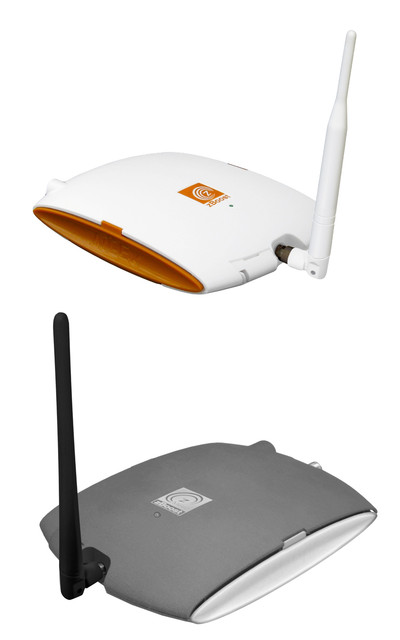
If you’ve never experienced a dropped cell phone call then you’re probably still using landlines! Dropped calls are a constant annoyance and fact of cell phone life, but what can you do if those calls keep getting dropped even when you’re at work or home? We have tried cell phone cases that claim to have “cell boosters” inside, but they didn’t seem to make a difference. Even if an antenna on a phone increases its sensitivity, the root problem is usually a dead zone, so a case that promises an antenna to boost sensitivity won’t have a signal to deal with, assuming the claim has any validity.
Another, more active approach, entails the use of a specialized amplifier and antenna to strengthen your signal, grab it and distribute it to the room it is needed in. We tested the Wi-Ex.com – zBoost-Metro & SOHO Cell Phone Signal Boosters to see if our constantly dropped calls in the dead zones around the house could come to a welcome end.
Unfortunately, I have the perfect “laboratory” to test the unit. Walking into our dining room while talking on a cell means that the call will inevitably drop almost as soon as you enter. At first I thought it was something my wife engineered to keep the kids and I from taking calls during meals, but it will happen consistently at any time of day, even when there isn’t food on the table!) Previously we’d tested the zBoost YX545 SOHO that differs from the Metro most visibly in the choice of signal antenna. The SOHO uses a traditional white co-ax whip approximately 12” long with a small extension on top. This should be mounted permanently in the highest spot you can find, that has a clear line of sight to the cell towers. Ideally this is outside, and then you can use a normal coax cable to connect to the inside base station that has a small adjustable whip antenna.
With the Metro the antenna is a unique white plastic box a couple of inches thick that uses suction cups to stick to a window pane. The Metro is designed for folks in an office building, or a home with a single level. The suction cups let you easily move the antenna, or have it travel with you. The base station looks very similar to the SOHO but with a grey color, while the SOHO is white and orange. The SOHO has a greater range up to 3,000 sq. ft., while the range of the Metro is 1,500 sq. ft.
Which unit you choose depends upon your needs and physical requirements. Many locations – especially hotels, offices, apartments, or rentals – may not allow you to mount an external antenna, so the portability of the Metro is a good fit. One option to mount the SOHO in a less visible or obtrusive way would be to mount it in attic. The signal won’t be as strong, but it is an easy way to avoid routing the coax from inside to outside.
Both units performed well in our tests, and both boast dual-band capability, so most phones are covered with the exception of Nextel/iDEN or 4G, 2100 MHZ phones. We measured the increase in our phones’ bar strength, and both increased reception by at least three bars. The range from the base station was one differentiation between the models, with the SOHO’s signal reaching a wider area with a more consistent signal strength farther away from the base station. The Metro’s antenna stuck to our windowpanes just fine. I would recommend, as indicated in the instructions, that users should take some time to test the antenna on different window locations to find the one that provides the strongest signal strength. Using the system is easy; just plug and play. Mount the antenna, roll out the cable to the base station, plug in the small power brick, and that’s pretty much it.
Once you have a unit running, it’s easy to forget you’re depending on it. This was driven home in September, when Hurricane Irene hit the northeast and knocked out power for several days in our neighborhood. With no landlines operational we relied upon cell phones and suddenly we were experiencing more dropped calls than normal in most of our house. Why? We realized that we had no power to our Metro, so had to walk outside to get a consistent signal (note: the loss of power was after the hurricane had passed – not during the storm!). As proof of how effective the Z-Boost Metro can be, as soon as power was restored so were our cell phones! When “Can you hear me now?” isn’t working, the Metro and SOHO units work invisibly in the background to keep dropped calls to a minimum and both come highly recommended. The YX540 Metro and YX545 SOHO Cell Phone Signal Boosters are Mac Edition Radio Holiday Picks!
Harris Fogel, posted 11/27/2011
For more information on the Wi-Ex.com – zBoost-YX540 Metro & YX 540 SOHO Cell Phone Signal Boosters visit: www.wi-ex.com



